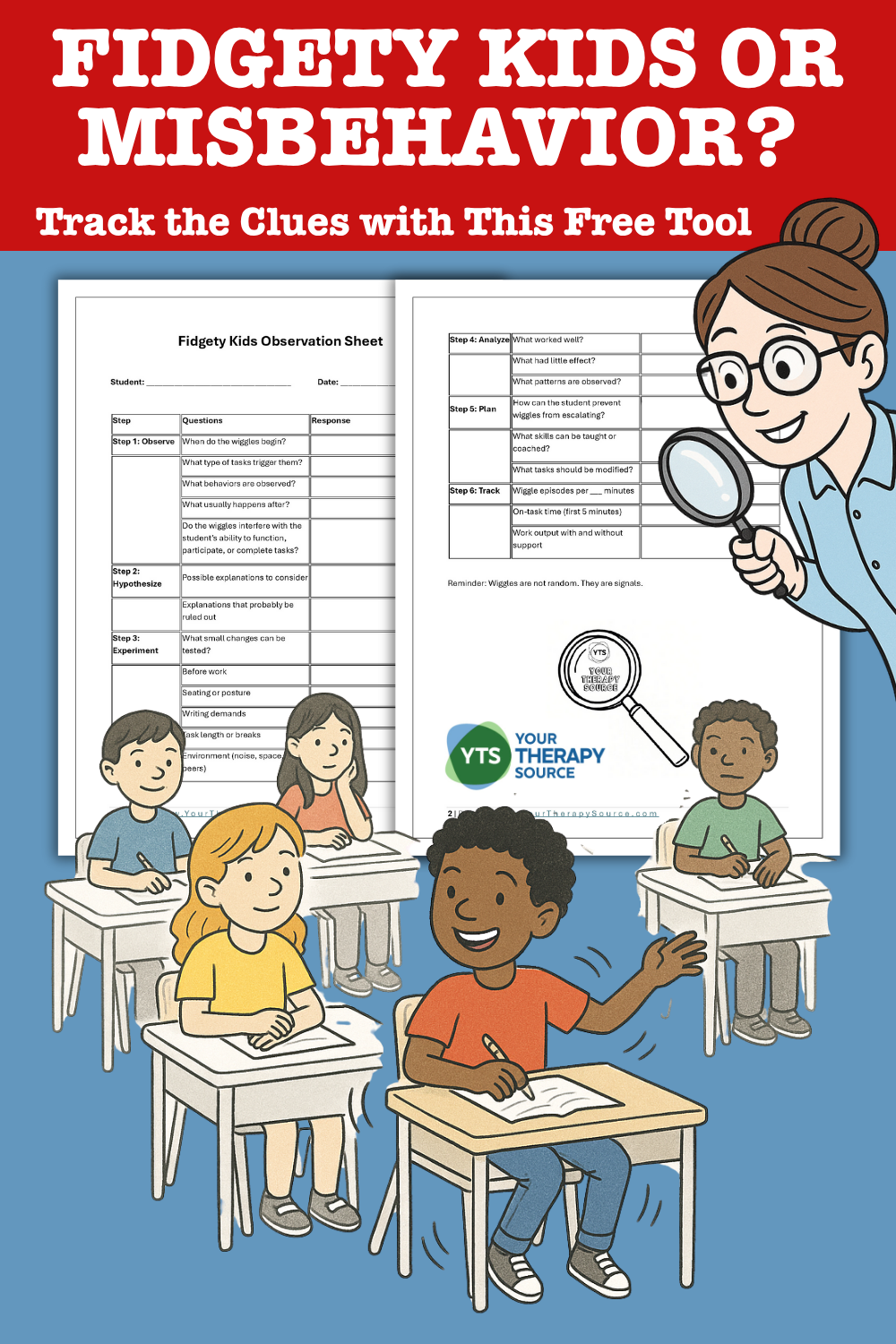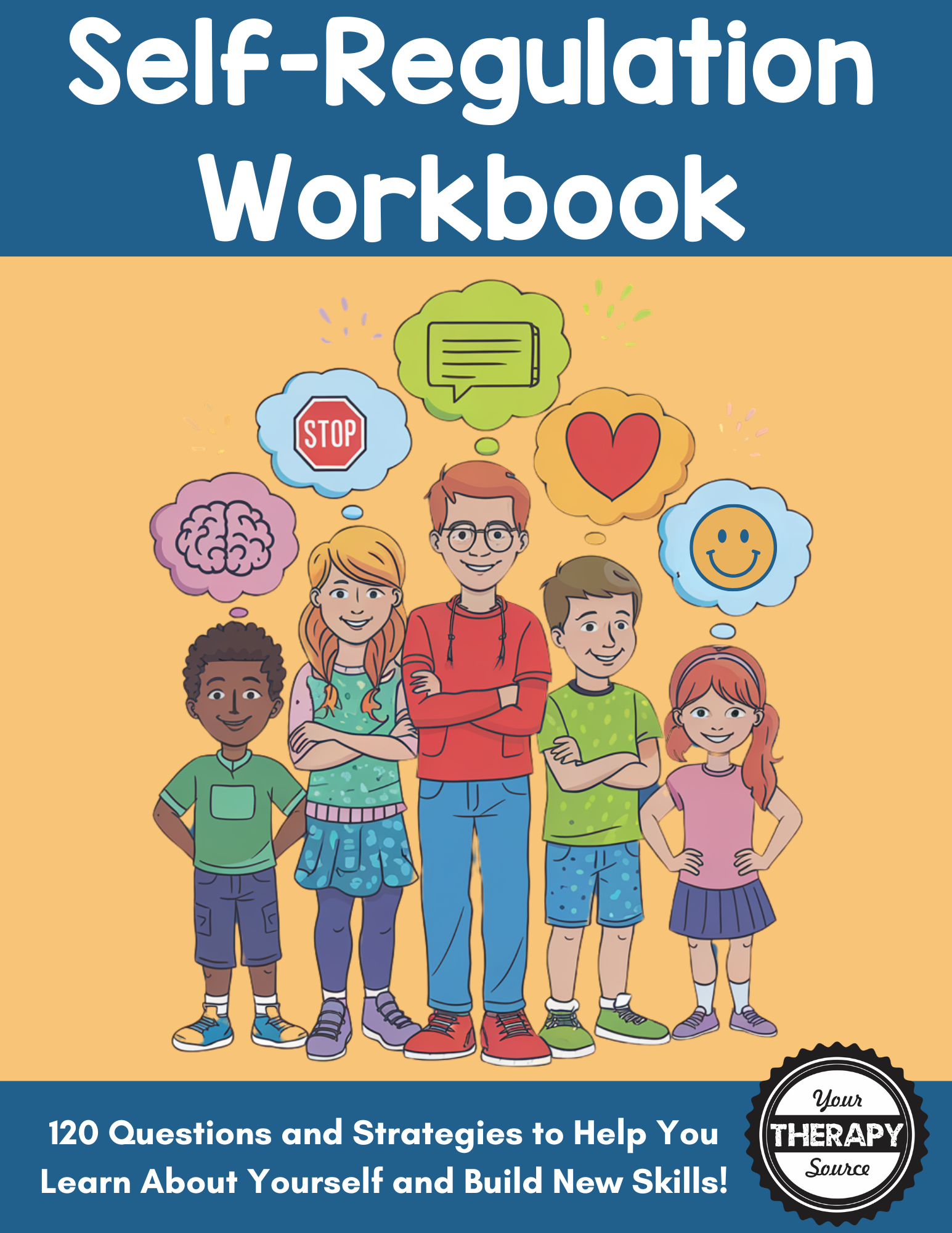Fidgety Kids or Misbehavior? Track the Clues with This Free Tool
Every teacher has met them, the fidgety kids. The ones who bounce in their chairs, drop pencils, rock back and forth, or tap their feet during lessons. At first glance, it can look like misbehavior. But what if those wiggles are really clues? With the right approach, we can decode what’s happening and respond in ways that support learning instead of fighting against it. You can download a FREE tool to help understand fidgety kids and encourage them to succeed at school.

Why Fidgety Kids Aren’t Just Being Defiant
Fidgeting often gets mistaken for avoidance or disrespect. In reality, many students wiggle because their bodies are trying to communicate something important. It might be:
- a need for sensory input because movement helps them regulate
- posture fatigue because sitting upright is hard work for young bodies
- motor load when writing itself feels overwhelming
- attention stamina running out quickly without breaks
- task frustration that signals the work feels too hard
Instead of jumping to punishment, it helps to think like a detective. Collect the evidence, test possibilities, and narrow down what the behavior is telling us.
Watch the Video to Uncover the Clues
How to Gather Classroom Clues
Before we can solve the mystery, we need to gather data. This means:
- watching for when fidgeting starts
- noticing what tasks trigger it
- recording what happens afterward such as teacher redirection, lost focus, or incomplete work
- comparing patterns, like noticing that wiggles appear during writing but disappear during hands-on play
This kind of data helps us separate silly behavior from deeper needs.

Self Regulation Workbook – Learn About Yourself
Probes That Reveal the Truth
Teachers can run small experiments, or probes, to test their theories. Examples include:
- a quick movement break before writing
- adding a cushion or footrest for posture
- using dictation or typing instead of handwriting
- breaking tasks into short slices with stretch breaks
- trying noise-reducing headphones
Some probes will not make a difference, but others can unlock huge insights. Posture support may suddenly improve focus, or dictation may eliminate wiggles entirely.
Free Tool: Track the Evidence Like a Detective
To make this easier, there is a free data collection tool you can use in your own classroom. Think of it like a detective’s case file. It gives you:
- a place to jot down observations
- open-ended prompts to consider different explanations
- space to record probes you have tried and their results
- simple ways to track progress over time
Instead of guessing, you will have real evidence to guide your next step.
Turning Wiggles Into Insights
The case of the fidgety student shows us an important truth: behavior is communication. Wiggles do not mean defiance, and they rarely mean laziness. More often, they are the body’s way of asking for help.
When we track the clues and test small changes, we uncover the real story and we can support our students with strategies that work.
In the end, the goal is not to stop kids from wiggling. The goal is to understand why they wiggle, and help them succeed.
Download your FREE Fidgety Kids Observation Sheets Here
Enter your email to get access to this free data collection form.



